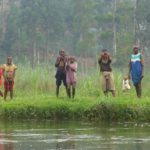
Rwanda is a small country; it only needs about 4 to 5 hours of driving to cross it. But it contains a diverse array of national parks and reserves, from the mountainous jungle of Volcanoes National Park (VNP) in the northwest (where the gorillas are found) to the thickly forested hills of Nyungwe National Park in the southwest (home to chimpanzees, countless birds and nearby tea plantations), both along the Great African Rift.
On its western border between the two, Rwanda also offers the long expanse of Lake Kivu, with countless bays and inlets indenting its shoreline as well as small islands accessible by kayak or powered boat.
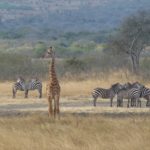
Then, to the east, lie the broad, grassy plains of Akagera, where once again roam the well-known animals of Central Africa, like lions and giraffe.
A month is barely enough to relish these delights, but we went with the flow, took our time in each place, to enjoy the best of these natural treasures had to offer.
Jungle
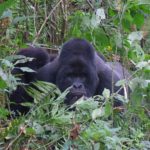
Most visitors come to Volcanoes National Park to see gorillas. Yet the same volcanic landscape stretches into Uganda and the Democratic Republic of Congo (with its famous Virunga reserve), so one can trek through the farmland and jungle in any of these three to discover the endangered gorillas. We opted for Virunga, which once was part of Rwanda anyway. There we enjoyed a safe and easy-going visit, but the threat of political instability and civil conflict deters many people. (To read about our experience with the gorillas, click here.)
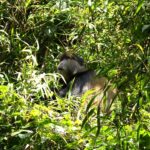
But VNP/Virunga is worth a long stay, because there is so much more to experience. We trekked for several hours through the woods in search of endangered golden monkeys.
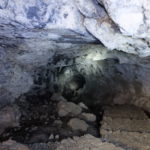
We enjoyed canoeing amid marshland wildlife and villages as well as hiking several kilometers through caves formed from lava tubes. We walked and drove the magnificent landscape.
Finally, we climbed 1000 meters up and down Mt. Bisoke for a full day. Others went even higher with an overnight up Mt. Karisimbe, while Virunga visitors could choose a similar overnight to an active volcano, Nyiragongo, whose crater percolates with molten lava.
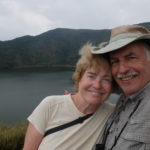
In 2002, that volcano disgorged enough lava to flow all the way down and through the city of Goma some 20 kilometers away, destroying the entire central city. All 20,000 inhabitants evacuated to Rwanda before returning to rebuild. The climb is not for the faint of heart or limb.
Forest…and Water

We spent several days exploring just a part of the thickly forested hills of Nyungwe National Park, a sizable chunk of SW Rwanda that has survived land grabbing for tea plantations. One whole day consisted of hiking along several magnificent trails, mainly to look for birds – and discover 60 species.

A second day brought us deeper to see our nearest primate relative, the chimpanzee, surprisingly larger and hairier in the wild than we ever saw in a zoo.
Rwanda claims that Nyungwe’s hills are the source of the Nile, though many other countries also find ways to make that claim.

Complicating the whole thing is that there are three feeders into the Nile. The Akagera River, which flows between Rwanda and Tanzania in the east, feeds the Nile as the Blue Nile, though its source is elsewhere. The third feeder is the Yellow Nile, which starts in Sudan.

In Nyungwe’s case, it’s the White Nile. The explorer, David Livingstone (of Livingstone/Stanley fame) traveled out of Lake Victoria along the Akagera River in the 1870s in order to pinpoint the Nile’s source, but failed. In the 20th century, an Aussie traced it to Nyungwe. Hence, Rwanda’s claim.
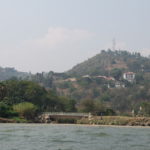
Out of the forest, water flows north to Lake Kivu. We stayed in three different places on the lake.
To us, the least engaging is the beach town of Gisenyi, Goma’s sister city just across the Congo border. Though the town itself and the shore are quite pleasant, the coastline consists of large bays and featureless, but sandy shores.

South at Kibuye and Cyungugu, the hilly terrain makes for fjords and small inlets that are a pleasure to view from land or from the water by kayak or motorized boat. Plus there are numerous islands of all sizes – such as one of the biggest, Bat Island (with an uncountable number of large bats). It is formally known as Buonaparte’s Island (because it looks like Napoleon’s headgear).
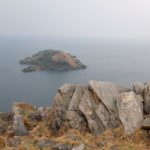
We swam and snorkeled just as easily here on the islands and mainland, but the landscape was so much more inviting.
Plains…and Water

Whatever the Nile’s source, no one including Livingstone needs to be told of water’s importance as the source of life. No place in Rwanda demonstrates this more than Akagera National Park in the eastern grasslands adjoining Tanzania. Its marshlands and multiple lakes are again the source of life for African animals – as well as neighboring farmers.

Akagera’s revival tells another Rwandan story of renewal, quite different from the human one following the Rwanda genocide. Here, the well-known animals of central and southern Africa used to roam, protected from 1934. Akagera was soon stricken by war and turmoil and the 1997 land predation of half its territory for farms. Yet it has nonetheless revived and goes on.
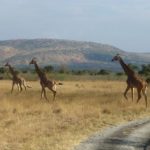
Since 2009, the Rwandan government and its parks management people, alongside conservation groups like African Parks, have restored this land to the wildlife – as a much less touristy alternative for safari-going tourists near Kigali, as well as a source of community revenue. Over 12,000 mammals inhabit the park’s 120,000 hectares. The name is fitting: for Akagera means “ongoing” or “never-ending,” as the Akagera River always seemed to the locals in the past.
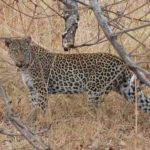
We can report it’s been a success, as evidenced by the numbers of animals we saw, and the presence of so many offspring, including rhinos and lions re-introduced from other parks in South Africa (as other Central African countries didn’t want to support competition). Over 30 hours in four days, some excellent guides took us on safari. We saw all kinds of animals on the loose – predators and prey, primates and ungulates, hippos and crocs, zebra and giraffes – plus 90 species of birds.
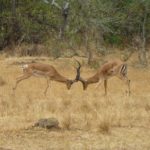
Even in the dry season, when we visited, the lakes and encircling, reedy marshes nourish the wildlife here. Though the level of the lake falls several meters during this time, the network of lakes still spread wide enough that many of the big animals, like elephants and rhinos, just disappear, sticking close to the water within the marshes, far from the navigable roads.
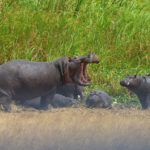
The only elephant we saw was the aged Mutware (as the locals call him, or “chief”). His is a sad story. Nurtured and kept for years by a villager nearby, Mutware was abandoned during the genocide of 1994. With his habits and even his odor altered by closeness to people, he was rejected by female elephants, bullied by males who broke his tusks in defeat, shunned by herds.

Aging didn’t help as he has become incontinent, dousing himself in musky urine over and over. He now hangs around the lodges and ranger stations, but he’s become cranky and bad-tempered from what he has endured. So he’ll chase jeeps and threaten people when riled up, though he was placid when we got close in our jeep.
We can’t help but lament his condition, a lonesome pariah and a musky old-timer, another kind of victim of the genocide. Yet we also saw in him an inverse symbol of renewal at Akagera, and in Rwanda since its firestorm of self-destruction. (Click here to read our post about the genocide in Rwanda.)
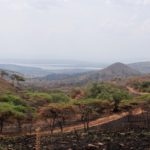
For the dry season is also the time of fires on the plains. At night, over on the unprotected Tanzania side, you can see the red glow and wafting smoke of fires burning the stubble from crops to refresh the soil. But, even in the reserve itself, controlled burning of the grasslands helps avoid devastating, uncontrolled fires.
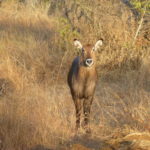
Fire represents death in Rwanda’s tribal religions, just as westerners use the eternal flame for memorials. Water represents life, and rebirth, and has become the fitting emblem of Rwanda’s miraculous recovery from the horror of 1994. Water flow features prominently in the gardens at the Kigali Memorial.
In VNP, the volcanoes gather it from the sky; in Nyungwe, the Nile begins to emerge. And, across the burnt surface of the hilly slopes overlooking Akagera, we saw so many animals grazing avidly. Bright green shoots had started poking through the charred soil, after just a bit of mid-day rain, auguring another season of life-giving showers.
(Also, for more pictures from Rwanda and DRC, CLICK HERE to view the slideshow at the end of the itinerary page.)


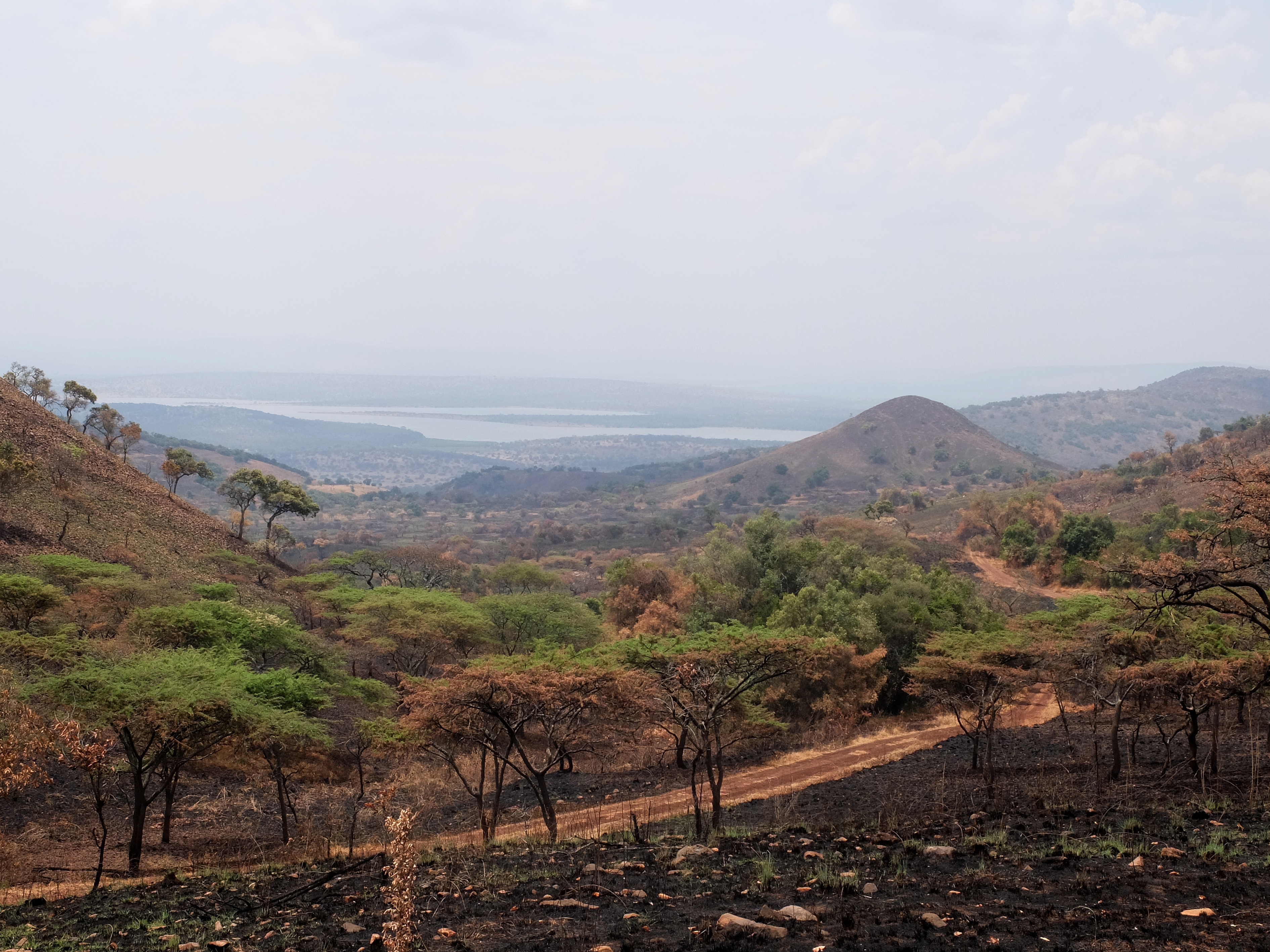
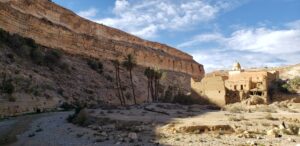
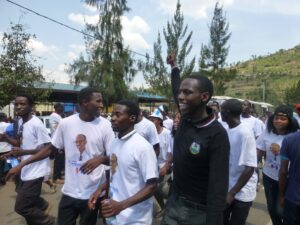
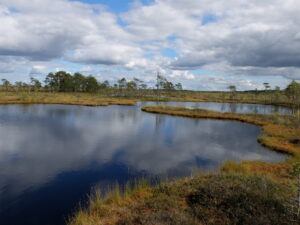
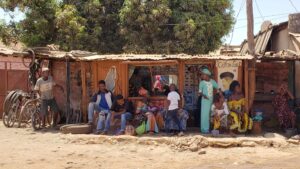
good morning-
sharon, here, (Erika’s mom, Bhutan). filing and came across your business card. just back from 6th trip to Kenya (TOO TAME for you, though), and was curious about your trip to Rwanda since i had talked about it with those in Kenya/considered driving there from Kenya (with my guide friend – would not go alone).
anyway, unlikely to happen. just wanted you all to know i am sooooo happy you are still traveling. apparently, people are astounded/laugh at me even for traveling alone (but with guide). i do it anyway.
stay well.
-sharon douglas
How nice of you to be in touch. Rwanda is a great country, easy to move around and with so much wildlife to enjoy. The people are welcoming, prospering and optimistic despite the horrific experience of the genocide – which must be understood by all who hope to avoid another anywhere. We know a great company to use, inexpensive and with the best guides as well.